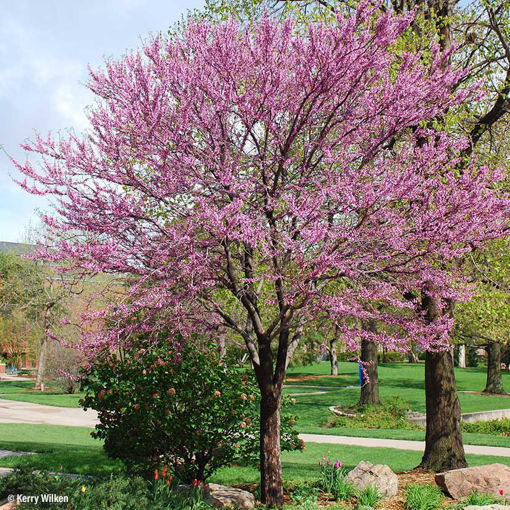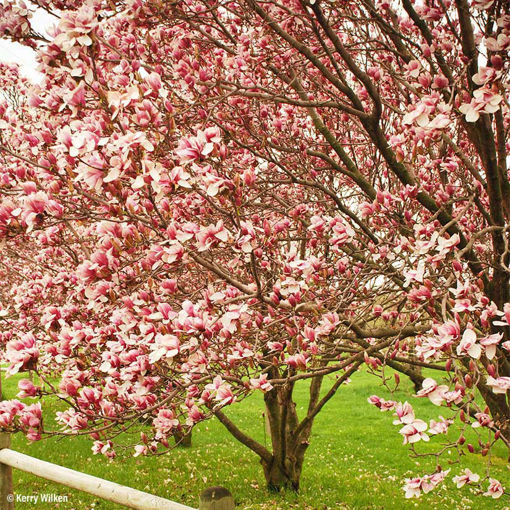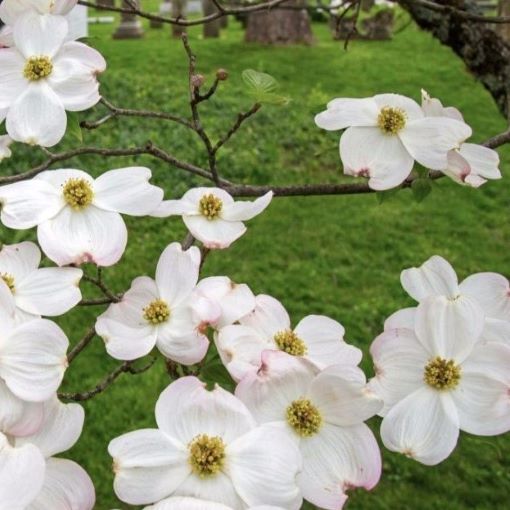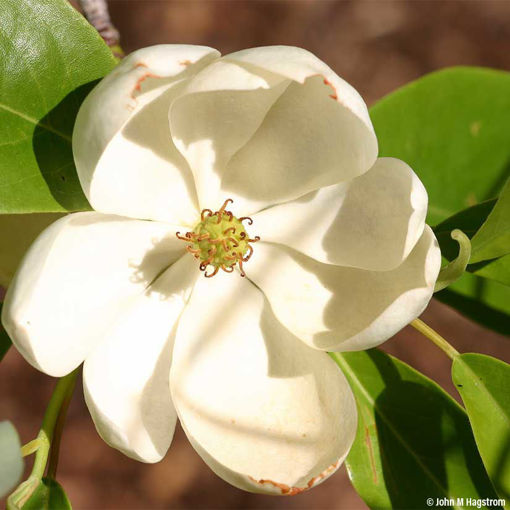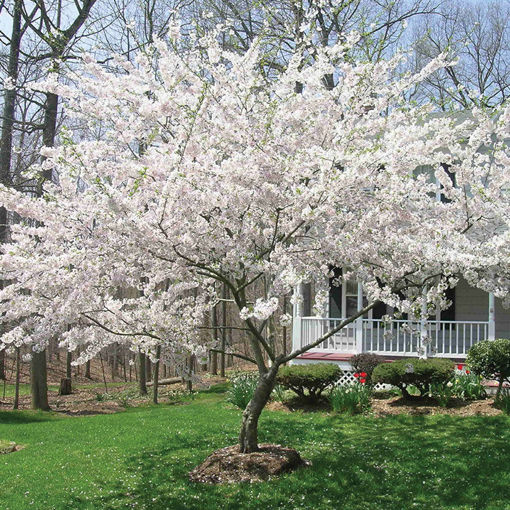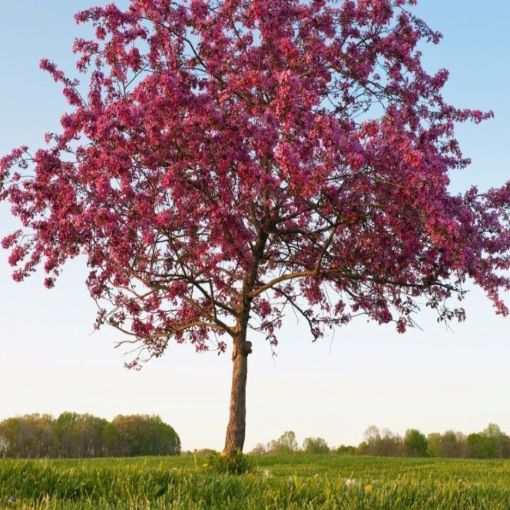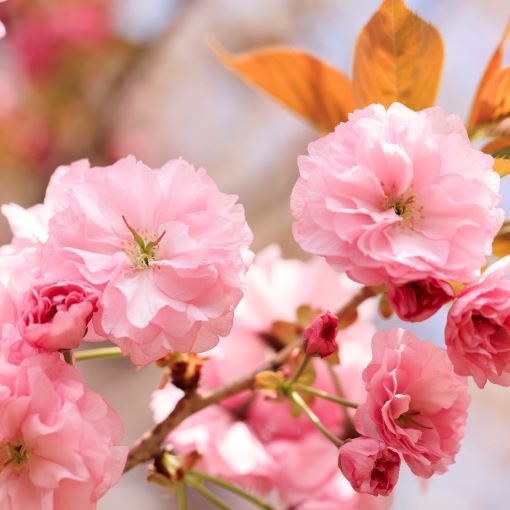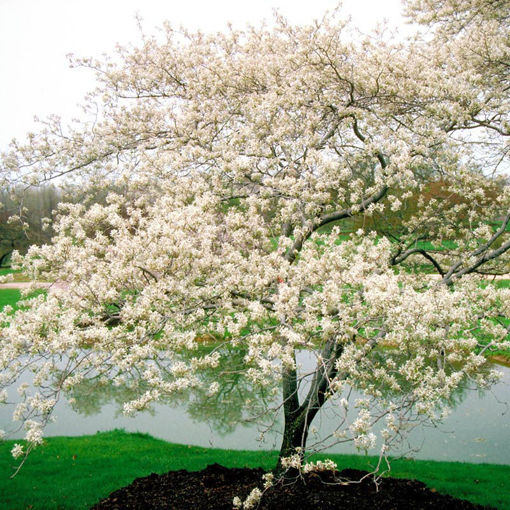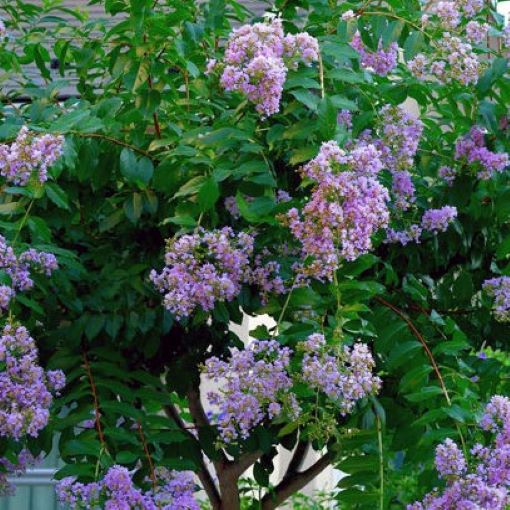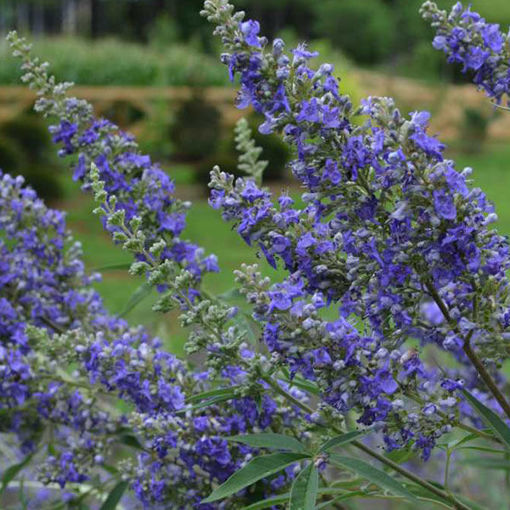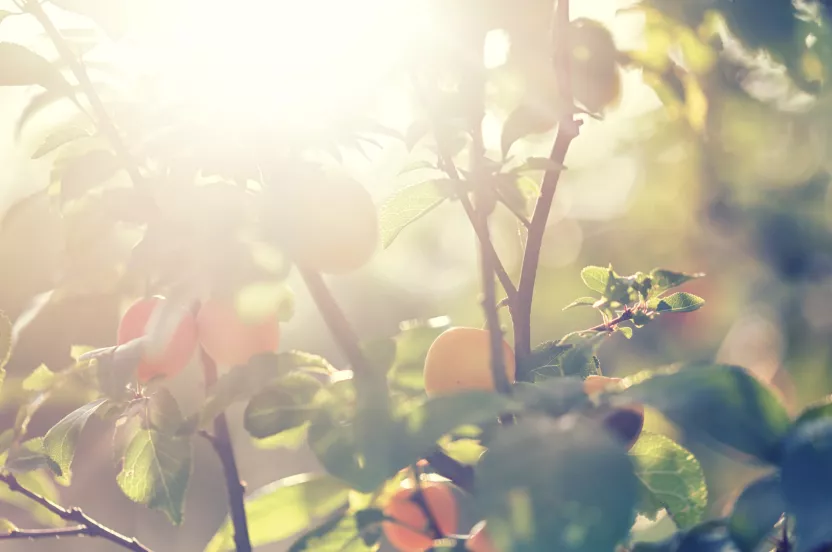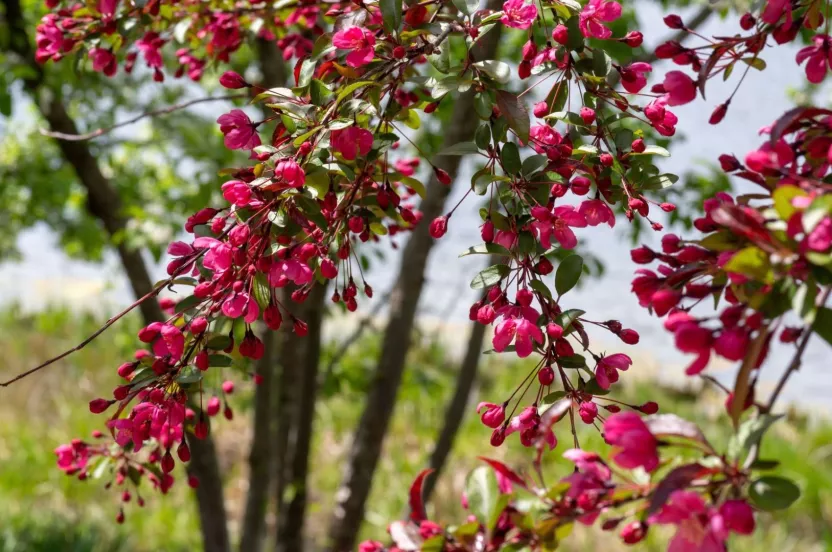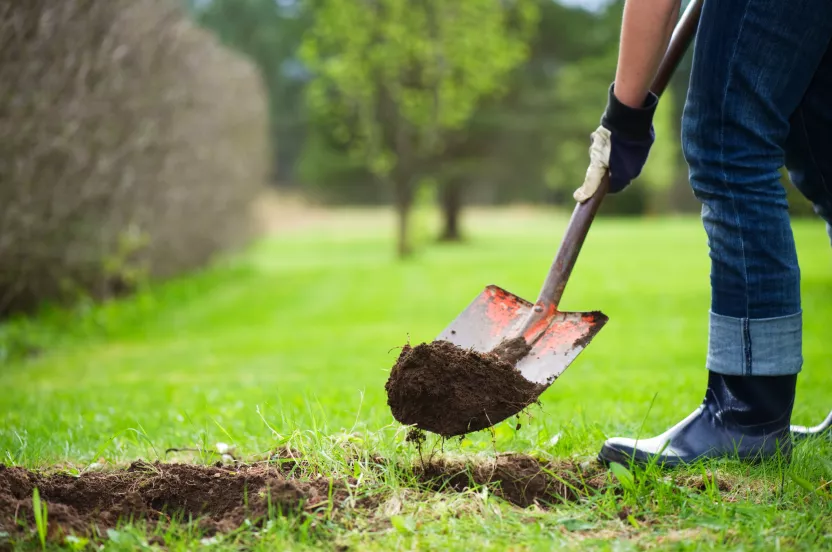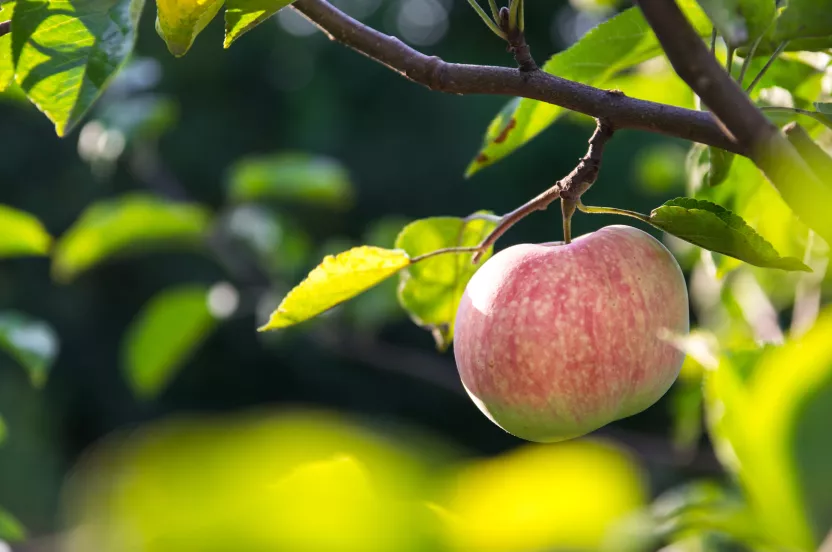Now live: The 2025 Canopy Report. Learn how Americans see trees. GET THE REPORT
10 Favorite Flowering Trees to Add to Your Yard in 2022
Flowering trees are a great choice if you’re looking to spruce up your landscape and add splashes of color.
March 1, 2022
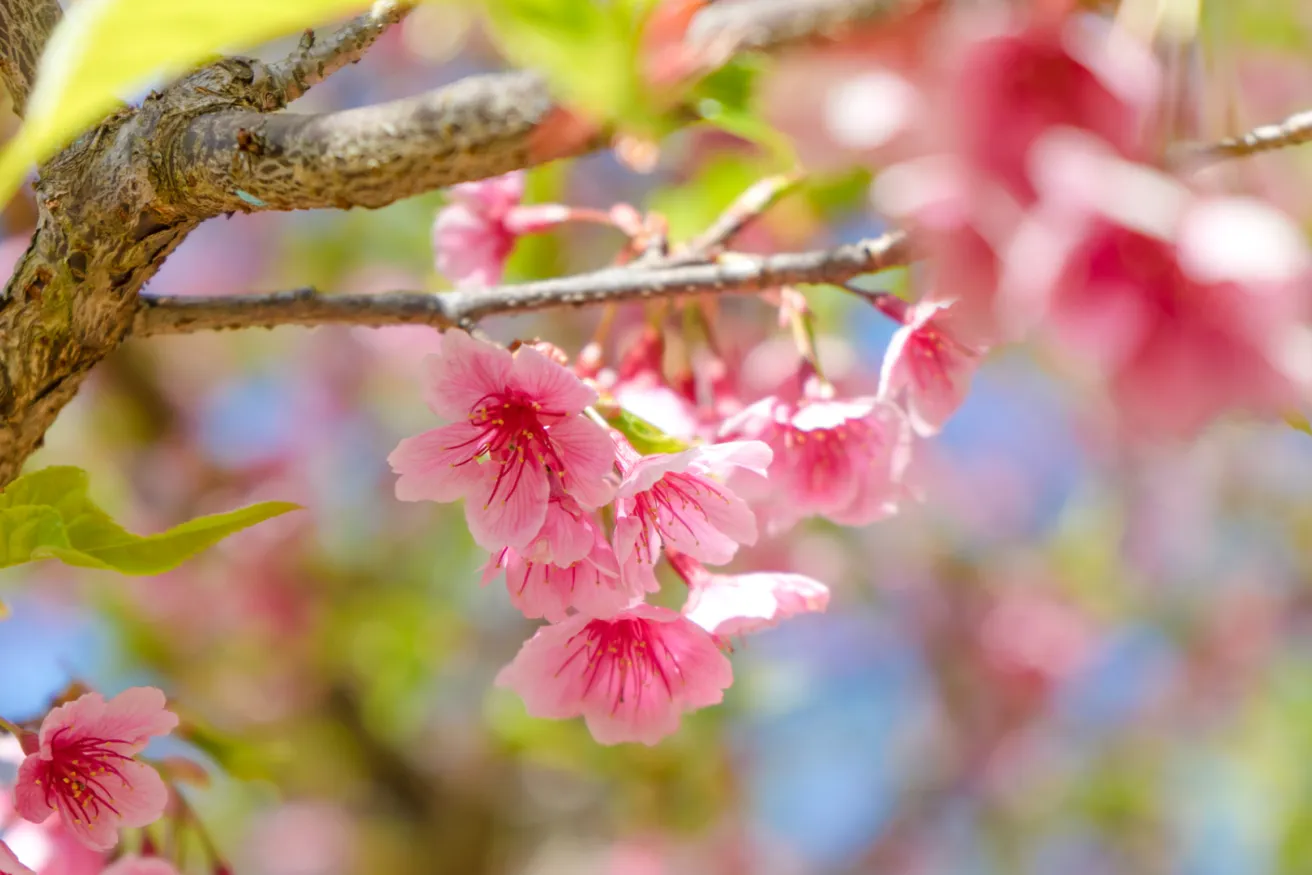
The season of vibrant blooms and sweet scents is almost here. And although the weather might say otherwise in some parts of the country, many people will be starting their spring planting very soon. Flowering trees are a great choice if you’re looking to spruce up your landscape and add splashes of color.
Here are 10 popular flowering trees that may be the right fit for your yard.
1. Eastern Redbud
Scientific Name: Cercis canadensis
Hardiness Zones: 6–9
The eastern redbud’s delicate blossoms are one of the season’s most dramatic displays. A profusion of small, rosy pink flowers burst forth every April.
But this tree’s beauty doesn’t end with its flowery show. Unique and irregular branching patterns combine with heart-shaped leaves, and yellow fall color to serve as a show-stopper in any season.
Mature Height: 20'–30'
Mature Spread: 25'–35'
2. Saucer Magnolia
Scientific Name: Magnolia x soulangeana
Hardiness Zones: 4–9
As the name suggests, the saucer magnolia features large, saucer-shaped blooms that cover the tree. The pinkish-purple and white flower coloring make quite a splash in early spring.
The tree spans most hardiness zones within the United States and is one of the most popular flowering trees in the country. Just one look at this magnolia in full bloom and you'll know why!
Mature Height: 20'–30'
Mature Spread: around 25'
3. White Dogwood
Scientific Name: Cornus florida
Hardiness Zones: 5–9
White dogwood trees are a popular choice for yards and gardens. The white petal-like bracts surround clusters of tiny yellow flowers to create breathtaking blooms each spring, April to May.
In addition to the beautiful flowers, this tree offers great fall color. The dark green leaves turn reddish-purple as the days grow shorter.
A great choice for a specimen tree, the white dogwood also works well near utility lines, buildings, and patios.
Mature Height: around 25'
Mature Spread: around 25'
4. Sweetbay Magnolia
Scientific Name: Magnolia virginiana
Hardiness Zones: 5–9
Creamy white flowers with a light lemon scent are the iconic trait of the sweetbay magnolia. While it may not bloom quite as abundantly as other magnolias, the blossoms appear later in the spring. The typical May to June window avoids any late frost that might spoil a flowering tree's beauty.
Other standout features include a multi-stemmed trunk, lustrous dark green leaves, and clusters of red fruit that attract wildlife.
Mature Height: 10'–20'
Mature Spread: 10'–20'
5. Yoshino Cherry
Scientific Name: Prunus x yedoensis
Hardiness Zones: 5–8
This species is considered the darling of the flowering tree world. It produces a blanket of white-pink blossoms with a faint almond fragrance from March through April.
In addition to the delightful spring show, the Yoshino cherry is beloved for its unique branching structure and dark green leaves. It also has the benefit of some drought tolerance.
Mature Height: 40'–50'
Mature Spread: 25'–40'
6. Prairifire Flowering Crabapple
Scientific Name: Malus ‘Prairifire’
Hardiness Zones: 3–8
Its showy, dark pink to red flowers are what draw most people to the prairifire flowering crabapple. And for good reason. The stunning, long-lasting blossoms are a sight to behold in April and May.
To add to its appeal, the prairifire flowering crabapple provide beautiful bronze fall color, is disease-resistant, and adapts to many different site conditions.
Mature Height: 15'–20'
Mature Spread: 15'–20'
7. Kanzan Cherry
Scientific Name: Prunus serrulata ‘Kanzan’
Hardiness Zones: 5–9
The Kanzan cherry is the most popular cultivar of all the double-flowering cherries, thanks to its stunning pink blossoms, good fall color, lack of fruit, and vase-shaped form. The tree blooms from April to early May.
While it has a limited lifespan that typically doesn’t exceed 15–25 years, the beauty of the Kanzan cherry tree makes it well worth planting.
Mature Height: 30'–40'
Mature Spread: 30'–40'
8. Shadblow Serviceberry
Scientific Name: Amelanchier canadensis
Hardiness Zones: 4–8
The delicate white flowers of the shadblow serviceberry appear in cluster each spring. Star-like in shape, the blooms typically arrive in March and April (depending on location).
In addition to the spring show, this serviceberry features vibrant fall foliage and purple-red fruit that attracts wildlife. It grows as a multi-stemmed shrub or small tree
Mature Height: 15'–25'
Mature Spread: 15'–25'
Scientific Name: Lagerstroemia indica ‘Muskogee’
Hardiness Zones: 7–9
A stately variety, the Muskogee crapemyrtle is a summertime bloomer. It's light lavender blossoms appear in clusters and continue for up to 100 days. The lavender color is then followed by red-orange foliage in the autumn.
This variety grows as either a large shrub or small tree and makes a great choice for lining a path, road, or property line.
Mature Height: 15'–20'
Mature Spread: 10'–15'
10. Delta Blues Vitex
Scientific Name: Vitex agnus-castus ‘PIIVAC-1 PPAF’
Hardiness Zones: 6–9
The aromatic, dark purple flowers of the Delta blue vitex burst into bloom in mid- to late summer. It will attract both butterflies and hummingbirds to your yard, so this is a nice choice for borders and butterfly gardens.
The cultivar can be grown as either a small tree or shrub and offers the additional benefits of yellow fall color and a tolerance to salt.
Mature Height: 8'–10'
Mature Spread: 8'–10'
